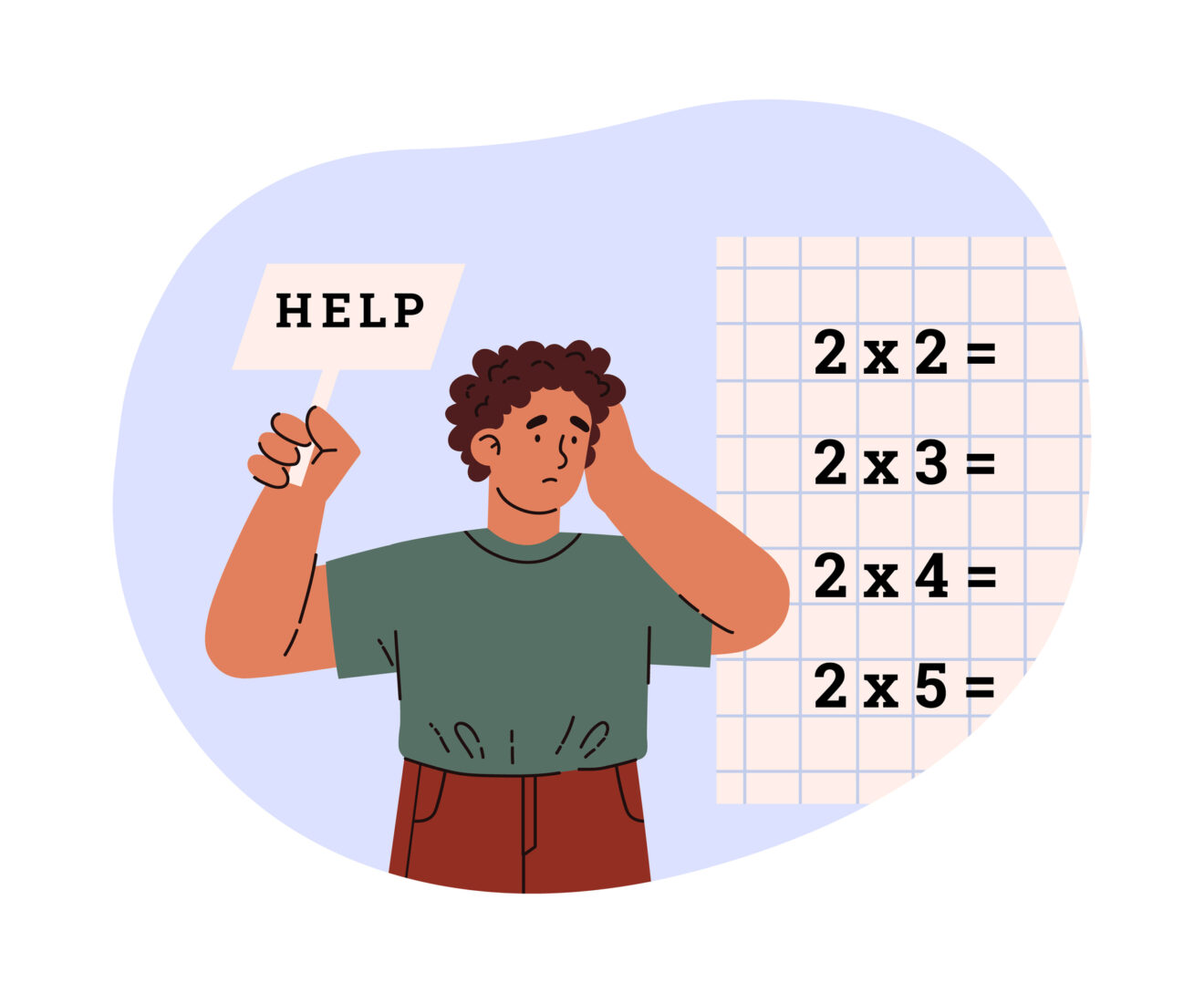Insights is a SmartBrief Education Originals column that features perspectives from noted experts and leaders in education on the hot-button issues affecting schools and districts. All contributors are selected by the SmartBrief Education editorial team.

Finding x is hard when you’re trying to understand why your brain won’t cooperate when it comes to math. For the approximately 93% of US adults who indicate that they experience some level of math anxiety, this can feel like nerves, sweating palms and an overwhelming sense of dread when faced with math-related tasks.
Although math anxiety has no bearing on a person’s intellectual ability to do math, it can cause negative self-talk and the avoidance of math-related tasks, ultimately resulting in a person not participating in lessons, assignments and tutoring opportunities, thus hindering their proficiency in math. Personal and professional implications also are at play for people who struggle with math, including the avoidance of careers that they dreamed of in medicine, science, teaching or engineering.
My own experiences with math anxiety empowered me with an understanding of the social and emotional implications of feeling inadequate as a student and a professional working and leading in education, and that is why I have dedicated my work to focusing on helping students struggling with math, math anxiety and dyscalculia — the specific math learning disorder. When I think about the estimated 17% of people in the US that suffer from high levels of math anxiety, it’s important to note that those aren’t all students. It is just as critical to serve the student with math anxiety as it is to serve the teachers with math anxiety.
If math anxiety is the denominator, dyscalculia may be the numerator
Math anxiety and dyscalculia can be related but are also two distinct struggles. Math anxiety is usually an emotional or psychological response to math-related tasks, whereas dyscalculia is a lifelong neurological condition that affects certain mathematical processes in the brain.
Fear and anxiety are powerful motivators and are handled by the oldest, most-established part of our brain, the amygdala. As soon as we engage in decision-making, the amygdala quiets down, and we engage the hippocampus. The amygdala is in charge of our survival, and the hippocampus is in charge of executive function. Both want full access to decision-making — meaning we’re literally incapable of learning if we’re currently managing fear or pain.
One of the ways we can help students stay in their hippocampus is to literally rehearse succeeding. A student with dyscalculia, often based on the feedback they receive, tends to feel like they’re constantly rehearsing failure, which diminishes their capacity to learn.
Multiple interventions are available
Fortunately, several interventions can help reduce math anxiety for students and teachers.
- Embracing an optimistic internal dialogue — an “I can do it” attitude — can bolster self-assurance and mitigate stress, paving the way for academic success.
- To tackle intimidating equations and complex problems, we advocate a step-by-step approach, making the journey toward a solution less overwhelming.
- Incorporating play into learning through math games and puzzles adds a dimension of fun, decreasing negativity and fostering a love for the subject.
- By implementing an errorless learning strategy, students are guided toward correct answers, thereby avoiding the memorization of mistakes.
- We also champion leveraging existing knowledge as a springboard for understanding new concepts, strengthening overall comprehension. Relating mathematical concepts to the real world not only enhances relevance but also alleviates associated anxiety.
- To further manage stress in math class, relaxation techniques such as deep breathing exercises and visualization methods can be beneficial.
- Community-building strategies like peer tutoring or support groups can provide a sense of camaraderie, propelling confidence in math skills.
Between 3% and 7% of students worldwide have dyscalculia, and professional counseling can be a viable option for students grappling with this severe math anxiety that hampers academic progress. Supports and interventions can help as a person works toward a formal diagnosis.
A good dyscalculia screener is the first step to understanding whether a person has this learning disability. An effective dyscalculia screener should be a streamlined, user-friendly tool designed to rapidly collect data on the areas of arithmetic processing and reasoning that are indicative of this neurodevelopmental difference. It should flag potential dyscalculia symptoms so you can kick-start the diagnostic process. Importantly, the screener must assess basic math skills that forecast future performance so that you can understand how to support your student with or without formal diagnosis. Finally, it should be designed for accessibility, aiding those who strive to comprehend and resolve a student’s struggles with math.
Not good? Or not confident?
When someone says, “I’m not good at math,” it has a different undertone from “I’m not confident in math” or “Math makes me feel inadequate.” These sentiments stem from math anxiety, an emotional response that can create crippling roadblocks to focus and comprehension.
My personal journey might have steered me toward the world of mathematics, but it was the voices of my colleagues and peers wrestling with math anxiety and dyscalculia that truly spurred my interest in dissecting these mathematical predicaments and specific learning disorders. Shockingly, there isn’t a lot of research or resources for intervention in these areas. This leads us to a sobering thought: If intervention aids are scarce now, consider the awareness void that must have existed five, 10, 20 or 30 years ago. We cannot ignore the fact that this issue affects our educators as well; they, too, may struggle with math anxiety or even undiagnosed dyscalculia.
Reducing math anxiety, and identifying dyscalculia, is a process that takes time and effort. Patience and persistence can go a long way as you start implementing interventions, providing ongoing support and encouraging your students. When I end a workshop session or training, I always ask the participants: “What will you take from this workshop and implement tomorrow in class?” It may be specific strategies to start using in your classroom or a tool to screen for dyscalculia.
Math anxiety can make people feel powerless, so I pose the same question to you: What will you take from this article and implement tomorrow in class?
Sandra Elliott, Ph.D., the chief academic officer for TouchMath, which offers a new tool to screen for dyscalculia. She is a career educator who has spent over four decades working to enhance education for all students and improve schools and their systems. She has served as special education teacher, principal and district-level administrator. She has held executive-level positions at for-profit education providers and foundations and was part of the EngageNY-Eureka Math team for several years. Elliott is also a member of the UNESCO-sponsored international EDUsummIT.
Opinions expressed by SmartBrief contributors are their own.
_________________________
Subscribe to SmartBrief’s FREE email newsletter to see the latest hot topics on edtech. It’s among SmartBrief’s more than 250 industry-focused newsletters.
